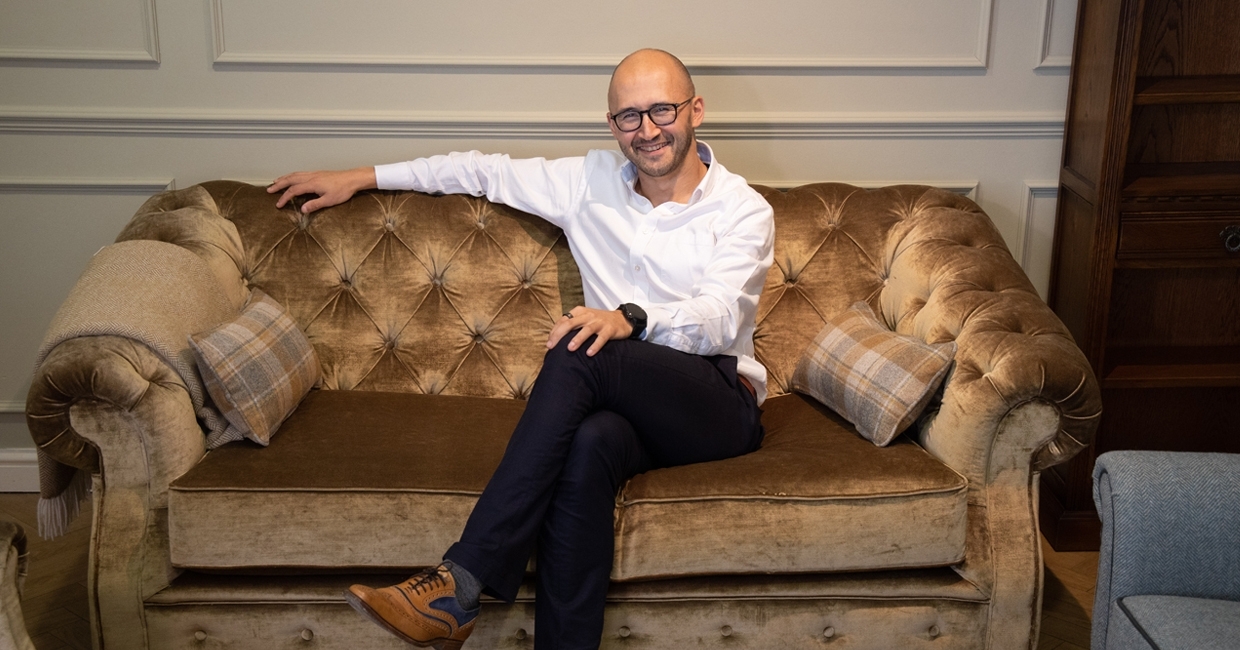Since he joined the business in 2015, former ASDA ecommerce specialist James Sheffield has brought new technology and fresh thinking to Wood Bros, the purveyor of furniture brand, Old Charm. Furniture News learns more about his modern mindset …
What was the first thing you noticed when you joined the industry?
There were definitely opportunities for suppliers and retailers to work more closely. There’s a wealth of information available from retailers and consumers, and developing your relationships with them – then responding to the information they provide - can be of great help when you’re developing new products and services.
Early on, I saw that we needed to increase our level of integration with retailers to make it easier to roll out changes and new initiatives. Consequently, many of our new products and size variations (such as Bayford) have emerged from discussions with stockists.
Have you seen consumer behaviour evolve since then?
The shop window has come a long way. Once, customers would visit a retailer, decide on a product and purchase it, but today’s buying channels are far more complex. People can engage with your brand through so many different touchpoints.
The internet has turned national retailers into local ones, with stockists across the country competing with each other, and the research carried out by consumers has become far more extensive – in both the pre-buying and the post-viewing price comparison stages.
Through social media and review sites, people do a lot more research on brands – one customer measured the dimensions of a sofa of ours and told us we were the only company in the country who offered a sofa to match her required dimensions!
They also expect immediate access to in-depth product information and shorter delivery times, and mobile shopping technology has become an important part in their journey.
These days, you have to bring the customer closer to your product. This means embracing everything from product visualisation (what the product will look like based on their choices) to letting them touch the fabric (customer sample requests).
Customers want a higher degree of choice and flexibility, and will try to specify the products, colours and fabrics that will work in their homes. So many people asked us about customising product that we’ve introduced services such as COM (customer’s own material).
Technology has been crucial to our strategy of providing customers with greater information at the key touchpoints in the purchasing process, and enabling them to visualise our products in other finishes or colourways. Shoppers are engaging with Wood Bros through various contact points, so providing relevant content at each stage of their journey is important.
Why has our industry been relatively slow to adopt such measures?
Three reasons. First, product complexity - a single product can have so many variations, and this not only creates supply chain complexities, but challenges us to communicate products more clearly to consumers when we’re selling them.
Next is the number of retailers. There are so many, spread across buying groups and independents, that rolling out improvements is more complex.
Third is the fact that furniture is a deferrable purchase, and the frequency of purchase is lower compared to other fast-moving consumer goods, making it difficult to learn from initiatives at times.
How has Wood Bros reacted?
We focused on streamlining the customer’s journey, with greater emphasis on integrating the touchpoints to make it more seamless. This includes our website and retailer network – we’ve made it easier for end consumers and stockists to find the information they need.
We’ve also refined the timing of our communications, utilising digital services and data to understand how to speak to the end consumer in a more timely manner.
And we’ve simplified our product offering. Spending time with stockists to better understand their challenges – and our limitations – has helped us shape our products and services. For example, we used to offer an excessive number of upholstery finishes, and reducing this has helped our sales staff and online performance.
We’ve been impressed by how keen our partners have been to help us achieve these aims. Partner selection was based on identifying who could enhance the services that we provide, and flexibility. In light of the prevailing market trends, it’s important to select partners that not only provide you with services now but also have the capability of growing with your long-term strategy.
Of course, there are difficulties. Integrating new partners has been challenging, as has measuring the success of certain initiatives. And – although I’m sure we’re all tired of talking about Brexit – developing new products and services with unproven volumes presents quite a challenge.
Where did your evolution prove easier than expected?
Integrating new services has been challenging, but we’ve been pleasantly surprised by how keen our retailers and service providers are to develop new offerings and services. It’s simplified our collaboration and the rolling out of new initiatives.
How do you see the bigger picture changing?
Delivery lead times are already getting shorter. In areas outside of furniture they offer next-day (even same-day) deliveries, and I think there will be greater emphasis on being able to offer these sorts of delivery services over the next 10 years.
I also think product visualisation will continue to bring customers closer to the product. We’re already beginning to see basic visualisation develop to overcome the barriers to touch online, with customers able to simulate various fabrics on our models.









